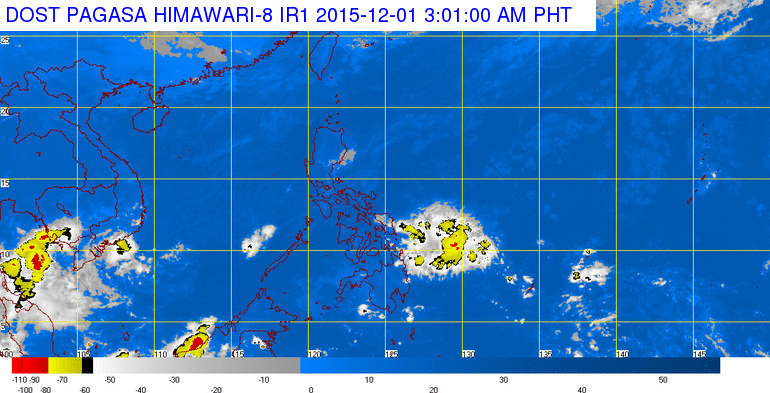More weather trackers installed in Soccsksargen Region
KORONADAL CITY, South Cotabato -- Fifteen weather devices have recently been installed in different parts of Soccsksargen Region, according to the Department of Science and Technology (DOST) 12. Dr. Zenaida Hadji Raof Laidan, regional director of DOST 12, the installation of the weather tracking devices form part of the continuing nationwide effort to mitigate disasters and hazards due to typhoons and heavy rains. Laidan said, these included seven Automated Rain Gauges (ARG), four Automated Weather Stations (AWS), and four Water Level Monitoring System (WLMS).
ARGs were installed in Isulan, Sultan Kudarat; Carmen and Alamada in North Cotabato; Kiamba and Malungon in Sarangani; Tupi and Koronadal City in South Cotabato. Meanwhile, AWSs were established at the People's Palace in Cotabato City; Barangay Badyangon, Palimbang, Sultan Kudarat; North Cotabato provincial capitol compound in Barangay Amas, Kidapawan City; and the General Santos City airport complex. WLMSs were located at Lumayong Bridge in Kabacan, North Cotabato; Kalawag III Bridge in Allah River, Isulan, Sultan Kudarat; New Dumangas Bridge in T'boli, South Cotabato; and Upper Buayan Bridge in Malungon, Sarangani.
The Doppler antennas in Tampakan, South Cotabato and Hinatuan, Surigao del Sur have already functioned to forecast weather conditions in Mindanao. "These are modern devices that provide real-time weather data," Laidan said. Each AWS is equipped with sensors capable of measuring weather parameters, wind speed and directions, air temperature, air humidity, and air pressure as well as rain volume, duration and intensity, she explained further. ARGs gather and record the amount of rain fall over a set period of time.
The WLMS is a stand-alone equipment with solar panel panel and makes use of an ultrasonic sensor to measure the rate of change of water level using the principles similar to radar and sonar. "Weather and rainfall data are sent wirelessly through short message system (SMS) or text message. Each station is equipped with data logger platform GSM Data Acquisition Terminal (GDAT), which serves as a mini-computer or brain that intelligently controls all functions and data communications," a briefer on the automated weather station said. "Deployment of these modern tracking equipment would eliminate subjective weather forecasting that would eventually help keep our communities alert to possible calamities and untoward incidents brought about by heavy rains and typhoons," Laidan said.
She said these projects are implemented in coordination with Advanced Science and Technology Institute (ASTI), which helped develop the needed instruments to assist the Philippine Atmospheric, Geophysical, and Astronomical Services Administration (PAGASA) in its weather monitoring and forecasting functions. These are in partnership with local government unuts which provided the area and security of the devices, These tracking devices are among DOST Secretary Mario Montejo's initiative for a "Smarter Philippines," which utilizes science and technology in assisting and ensuring the safety of every Filipino through disaster preparednesd and mitigation under the DOST's Project NOAH or the Nationwide Operational Assessment of Hazards.
Reported by Danilo E. Doguiles
ARGs were installed in Isulan, Sultan Kudarat; Carmen and Alamada in North Cotabato; Kiamba and Malungon in Sarangani; Tupi and Koronadal City in South Cotabato. Meanwhile, AWSs were established at the People's Palace in Cotabato City; Barangay Badyangon, Palimbang, Sultan Kudarat; North Cotabato provincial capitol compound in Barangay Amas, Kidapawan City; and the General Santos City airport complex. WLMSs were located at Lumayong Bridge in Kabacan, North Cotabato; Kalawag III Bridge in Allah River, Isulan, Sultan Kudarat; New Dumangas Bridge in T'boli, South Cotabato; and Upper Buayan Bridge in Malungon, Sarangani.
The Doppler antennas in Tampakan, South Cotabato and Hinatuan, Surigao del Sur have already functioned to forecast weather conditions in Mindanao. "These are modern devices that provide real-time weather data," Laidan said. Each AWS is equipped with sensors capable of measuring weather parameters, wind speed and directions, air temperature, air humidity, and air pressure as well as rain volume, duration and intensity, she explained further. ARGs gather and record the amount of rain fall over a set period of time.
The WLMS is a stand-alone equipment with solar panel panel and makes use of an ultrasonic sensor to measure the rate of change of water level using the principles similar to radar and sonar. "Weather and rainfall data are sent wirelessly through short message system (SMS) or text message. Each station is equipped with data logger platform GSM Data Acquisition Terminal (GDAT), which serves as a mini-computer or brain that intelligently controls all functions and data communications," a briefer on the automated weather station said. "Deployment of these modern tracking equipment would eliminate subjective weather forecasting that would eventually help keep our communities alert to possible calamities and untoward incidents brought about by heavy rains and typhoons," Laidan said.
She said these projects are implemented in coordination with Advanced Science and Technology Institute (ASTI), which helped develop the needed instruments to assist the Philippine Atmospheric, Geophysical, and Astronomical Services Administration (PAGASA) in its weather monitoring and forecasting functions. These are in partnership with local government unuts which provided the area and security of the devices, These tracking devices are among DOST Secretary Mario Montejo's initiative for a "Smarter Philippines," which utilizes science and technology in assisting and ensuring the safety of every Filipino through disaster preparednesd and mitigation under the DOST's Project NOAH or the Nationwide Operational Assessment of Hazards.
Reported by Danilo E. Doguiles








Post a Comment